Types of Kitchen Knives And Their Uses
Kitchen knives come in various types, each designed for specific culinary tasks such as slicing, dicing, and chopping. Understanding the different types of kitchen knives and their uses is essential for any aspiring cook or professional chef.
Whether you’re looking for a versatile chef’s knife, a precise paring knife, or a sturdy bread knife, having a good understanding of their purposes will enhance your cooking experience and help you achieve better results in the kitchen. In this comprehensive guide, we will explore the most common types of kitchen knives and delve into their unique features and recommended uses.
So, let’s dive in and discover the perfect knife for your culinary endeavors.
Essential Knives For Every Kitchen
Discover the must-have knives for your kitchen and their essential uses. From chef’s knives for slicing and dicing to paring knives for precise tasks, equip your kitchen with the right tools for every culinary challenge.
Whether you’re a professional chef or an amateur cook, having the right kitchen knives is crucial for preparing delicious meals. There are various types of knives available, each designed for specific tasks. In this section, we will explore the essential knives that every kitchen should have: the Chef’s Knife, the Paring Knife, and the Bread Knife.
Chef’S Knife:
- Highly versatile and considered the workhorse of the kitchen.
- The blade typically ranges from 6 to 10 inches in length.
- Ideal for slicing, dicing, chopping, and mincing a wide range of ingredients.
- The curved and sharp blade allows for effortless rocking motion during cutting.
- Used for cutting vegetables, fruits, herbs, and meat.
Paring Knife:
- A small, lightweight knife with a narrow pointed blade.
- The blade length usually ranges from 2 to 4 inches.
- Perfect for precise tasks such as peeling, trimming, and intricate designs.
- Essential for removing seeds, deveining shrimps, or creating garnishes.
- Great for slicing smaller fruits and vegetables.
Bread Knife:
- Features a long, serrated blade with a sharp edge.
- Typically ranges from 8 to 10 inches in length.
- Designed to effortlessly slice through crusty bread without crushing it.
- Also useful for slicing cakes, tomatoes, and delicate fruits with tough skins.
- The serrations grip the food’s surface, ensuring a clean and precise cut.
Having these essential knives in your kitchen arsenal will make meal preparation much more efficient and enjoyable. With their unique designs and functionalities, you’ll be ready to tackle any recipe that comes your way. So, equip your kitchen with these must-have knives and take your culinary skills to the next level!
Specialized Knives For Specific Purposes
Discover the diverse world of kitchen knives, specially designed for specific tasks. From slicing meats to chopping vegetables, these specialized knives ensure precision and efficiency in the culinary realm. Explore the different types of kitchen knives and their unique uses in your cooking adventures.
Santoku Knife
The Santoku knife is a versatile kitchen tool that originated in Japan. It’s known for its shorter, wider blade and is often referred to as a “three virtues” knife, as it excels in slicing, dicing, and mincing. Here are some key characteristics and uses of the Santoku knife:
- Multipurpose: The Santoku knife is designed to handle a variety of tasks in the kitchen, making it a popular choice for home cooks. It can be used for slicing meats, chopping vegetables, and even finely mincing herbs.
- Granton Edge: Many Santoku knives feature a granton edge, which consists of small indentations along the blade. This design helps prevent food from sticking to the knife while cutting, allowing for smoother and more efficient slicing.
- All-Purpose Cutting: The wide blade of the Santoku knife makes it ideal for cutting through thicker ingredients, such as root vegetables or cheese. Its flat cutting edge allows for precise and clean cuts.
- No Rocking Motion: Unlike Western-style knives, the Santoku knife is not designed for a rocking motion when cutting. Instead, it relies on straight downward cuts and a back-and-forth motion for efficient slicing.
- Lightweight and Balanced: Santoku knives are typically lighter than Western-style chef knives, making them easier to handle and control. The balance between the blade and handle provides a comfortable grip and reduces fatigue during prolonged use.
Utility Knife
A utility knife is a versatile tool that every kitchen should have. With its medium-sized blade and varied functionality, this knife is suitable for a wide range of cutting tasks. Here’s what you need to know about the utility knife:
- All-Purpose Helper: As the name suggests, a utility knife is designed to handle numerous tasks in the kitchen. It can be used for slicing, dicing, and chopping various ingredients with precision and ease.
- Blade Length: A utility knife typically has a blade length ranging from 4 to 7 inches, making it smaller than a chef’s knife but larger than a paring knife. This size allows for more control and maneuverability while working with different foods.
- Versatile Use: Whether you need to trim fat from meat, slice sandwiches, or cut through small to medium-sized fruits and vegetables, the utility knife is up to the task. Its sharp blade and manageable size make it a reliable choice for everyday cooking needs.
- Multi-Functional Design: The utility knife’s blade is usually slightly curved, allowing for both slicing and chopping motions. It can handle a variety of ingredients, from delicate herbs to tougher cuts of meat.
- Essential in Any Kitchen: Due to its versatility and practicality, a utility knife is often considered an essential tool for amateur and professional chefs alike. Its compact size and wide range of uses make it a go-to option for everyday prep work.
Boning Knife
A boning knife is a specialized tool designed for the precise and efficient removal of bones from meat, poultry, and fish. This knife is a must-have for any serious chef or home cook who works with whole cuts of meat.
Below are the important features and uses of a boning knife:
- Flexible and Narrow Blade: The boning knife features a thin, sharp, and flexible blade, usually between 5 and 7 inches in length. This blade allows for close work and intricate cuts, as it easily maneuvers around bones and joints.
- Removing Bones: The primary purpose of a boning knife is to remove bones from raw or cooked meat. Its sharp point and narrow blade enable the user to precisely separate flesh from bone, minimizing waste and maximizing yield.
- Trimming Fat: Besides bone removal, a boning knife is also useful for trimming fat or silver skin from meat. The precision of the narrow blade allows for accurate trimming without sacrificing the desired portions.
- Fish Filleting: When it comes to preparing fish, a boning knife is invaluable. Its flexibility and sharpness let you glide along the backbone, removing the fillet with minimal effort and leaving behind minimal wastage.
- Comfortable and Secure Grip: Most boning knives have ergonomic handles designed to provide a secure grip, even when working with slippery or greasy ingredients. This ensures safety and control during delicate boning tasks.
Knives For Precision And Fine Work
Discover a wide range of kitchen knives designed for precision and fine work. From chef’s knives to paring knives, equip your kitchen with the right tools for every task.
When it comes to precision and fine work in the kitchen, having the right set of knives is essential. These specialized knives are designed to handle delicate tasks with precision and accuracy, making them indispensable tools for any aspiring chef or home cook.
In this section, we will explore three types of knives that excel in precision and fine work: the Fillet Knife, Peeling Knife, and Vegetable Knife or Nakiri. Let’s jump right in and discover their unique features and uses.
Fillet Knife:
- Ideal for delicate tasks such as filleting fish or deboning poultry
- Long, flexible blade that allows for precise cuts and maneuverability
- Provides maximum control and precision when working with small or intricate cuts
- Perfect for creating paper-thin slices of meat or fish
- Can also be used for trimming fat or skin from proteins
Peeling Knife:
- Designed specifically for peeling fruits and vegetables
- Compact and lightweight with a short, curved blade for easy maneuvering
- Allows for precise peeling, minimizing waste and maximizing yield
- Great for removing the skin or rind from produce while preserving the flesh underneath
- Essential for garnishing and creating decorative cuts
Vegetable Knife Or Nakiri:
- Specifically crafted for slicing, dicing, and chopping vegetables with precision
- Wide, rectangular blade with a straight edge for maximum contact and control
- Provides a clean cut, minimizing bruising or crushing of delicate vegetables
- Perfect for creating uniform cuts and precise julienne or brunoise
- Can also be used for scooping or transferring chopped ingredients
Using these knives for precision and fine work will not only elevate your culinary skills but also enhance the presentation of your dishes. Remember to handle these knives with care and always keep them sharp for optimal performance. With the right tools at your disposal, you’ll be able to tackle any intricate task in the kitchen with ease and finesse.
A Closer Look At Chef’S Knives
Discover the various types of kitchen knives and their specific uses with this closer look at chef’s knives. From slicing to chopping, these essential tools will elevate your culinary skills.
A chef’s knife is often considered the workhorse of the kitchen due to its versatility and indispensable nature. This essential tool is designed to handle a wide range of tasks, making it a must-have for both professional chefs and home cooks.
Let’s delve deeper into the characteristics and uses of chef’s knives.
The Workhorse Of The Kitchen:
- Chef’s knives have a broad, sturdy blade with a slightly curved cutting edge. This design allows for efficient rocking motion during chopping, slicing, and dicing.
- The blade length typically ranges from 6 to 14 inches, providing the user with optimal control and leverage.
- They feature a pointed tip, which aids in intricate tasks like removing seeds or creating precise cuts.
- Chef’s knives are usually weighty, offering a balanced feel and stability in hand.
- The blade is typically made of high-quality stainless steel, ensuring durability and resistance to stains and corrosion.
- The handle is usually crafted from materials like wood, plastic, or composite, providing a comfortable grip during extended use.
- These knives often come with a full tang construction, where the blade extends through the entire length of the handle, enhancing strength and overall stability.
- Chef’s knives are incredibly versatile and can handle a wide range of tasks, making them indispensable in the kitchen.
Ideal For Chopping, Slicing, And Dicing:
- Chopping: Chef’s knives excel in chopping tasks, effortlessly reducing ingredients like vegetables, herbs, or proteins into smaller, uniform pieces.
- Slicing: With their long, sharp blades, chef’s knives are perfect for slicing through meat, fish, or even delicate produce like tomatoes.
- Dicing: The precision and control offered by chef’s knives make them ideal for dicing ingredients, whether it’s an onion or a bell pepper.
- Mincing: The rocking motion facilitated by their curved blades makes chef’s knives the go-to tool for mincing garlic, shallots, and other aromatic ingredients.
- Carving: When it comes to carving roasts, poultry, or large fruits, chef’s knives provide the necessary length, sharpness, and maneuverability.
- Precision Cuts: The pointed tip of a chef’s knife allows for intricate tasks, such as deveining shrimp, filleting fish, or removing the seeds from a chili.
A chef’s knife serves as the workhorse of the kitchen, offering versatility, precision, and control. Whether you need to chop, slice, dice, or perform delicate tasks, this indispensable tool is a must-have for any culinary enthusiast.
The Versatile Paring Knife
The versatile paring knife is a must-have tool in any kitchen, ideal for intricate tasks like peeling, trimming, and slicing small fruits and vegetables. Its compact size and sharp blade make it indispensable for precision work.
Looking for a kitchen knife that can handle a variety of tasks with precision and ease? Look no further than the versatile paring knife. This small but mighty tool is a must-have in any kitchen and can be used for a wide range of purposes.
From peeling fruits and vegetables to detailed cutting and trimming, the paring knife is a versatile workhorse that every home cook should have in their culinary arsenal.
Perfect For Peeling And Precision Cutting:
- Peeling: The paring knife is perfect for peeling fruits and vegetables, making quick work of tough-skinned produce. Whether you’re removing the skin from an apple or peeling a carrot, the sharp, narrow blade of the paring knife allows for precise control and minimal waste.
- Precision Cutting: When it comes to precision cutting, the paring knife is in a league of its own. Its small size and sharp blade make it ideal for intricate tasks like trimming, scoring, and garnishing. From removing the seeds of a bell pepper to creating beautiful fruit and vegetable decorations, the paring knife can handle it all.
Essential For Detail Work:
- Detail Work: When you need to tackle tasks that require precision and attention to detail, the paring knife is an essential tool. Its slender profile and sharp blade make it perfect for delicate tasks like deveining shrimp, deseeding jalapenos, and trimming fat from meat. The paring knife allows for intricate and meticulous cutting, ensuring that you can achieve professional-level results in your cooking.
The paring knife is a versatile and indispensable tool in the kitchen. Its ability to handle tasks like peeling, precision cutting, and detail work makes it an essential addition to any cook’s kitchen. So, whether you’re a seasoned chef or a home cook looking to elevate your cooking skills, make sure to have a paring knife in your collection.
With its versatility and precision, this small but mighty knife will soon become your go-to tool for a range of culinary tasks.
The Indispensable Bread Knife
The indispensable bread knife is a vital tool in the kitchen, designed to effortlessly slice through loaves of bread without crushing or tearing. It offers precise cuts, making it ideal for achieving even slices every time.
A bread knife is an essential tool in any kitchen, specifically designed to tackle the challenges of slicing bread. Its unique serrated blade enables clean and even cuts, ensuring that your homemade bread or store-bought loaf is perfectly sliced every time.
With its specialized functionality, the bread knife is ideal for a variety of bread types, from baguettes to crusty artisan loaves. Let’s dive into the characteristics and uses that make the bread knife a must-have in your kitchen arsenal.
Designed For Clean And Even Slices:
- Serrated Blade: The bread knife’s serrated blade features teeth-like indentations along the edge, allowing it to grip and cut through the crust without crushing the soft interior.
- Scalloped Edges: The scallops on the blade prevent tearing and provide a sawing motion as you slice, resulting in clean and sharp edges.
- Long Blade: Bread knives usually have a long, narrow blade, giving you the ability to slice through large loaves in a single motion.
Works Well With Hard And Soft Crusts:
- Hard Crusts: Whether it’s a hearty loaf of sourdough or a crispy baguette, the bread knife’s serrated blade easily bites into and slices through tough exteriors without compromising the tender crumb within.
- Soft Crusts: Even delicate breads like brioche or sandwich rolls can be sliced effortlessly with a bread knife. The serrated blade gently cuts through the soft crust, maintaining the bread’s shape and texture.
A reliable bread knife is a kitchen staple, ensuring that you never struggle with uneven, squashed, or mangled slices again. Its exceptional design and versatility make it the go-to tool for bread lovers and home chefs alike. So, if you want to enjoy flawless, bakery-worthy slices of bread every time, make sure to add a quality bread knife to your kitchen collection.
The Multi-Purpose Santoku Knife
Discover the versatility of the multi-purpose Santoku knife, a kitchen essential for slicing, dicing, and chopping with precision. Explore the different types of kitchen knives and their specific uses to enhance your culinary skills.
A Japanese Knife With Western Influence
The multi-purpose Santoku knife is a popular and versatile kitchen tool that seamlessly blends the precision of traditional Japanese craftsmanship with the practicality of Western design. With its unique shape and sharp blade, the Santoku knife offers an array of benefits and uses in the kitchen.
Great For Slicing, Dicing, And Chopping
- The Santoku knife’s name translates to “three virtues” in Japanese, referring to its ability to excel in three primary tasks: Slicing, dicing, and chopping.
- Its shorter and wider blade compared to a traditional chef’s knife allows for efficient and precise cutting motions, making it ideal for slicing various ingredients.
- The flat edge of the Santoku knife ensures clean cuts, while the slight curve towards the tip facilitates rocking motions for effortless chopping.
- The Granton edge, with its distinctive hollowed-out pattern, prevents food from sticking to the blade, allowing for smoother cutting and reducing the need for constant cleaning.
- The Santoku knife’s versatility is further enhanced by its ability to handle different types of food, including meat, fish, vegetables, and herbs.
The Santoku knife is a valuable addition to any kitchen, combining the best features of Japanese and Western knives. Its multi-purpose design and exceptional slicing, dicing, and chopping capabilities make it an essential tool for both professional chefs and home cooks.
Whether you’re preparing a delicate fish fillet or finely chopping herbs, the Santoku knife offers the perfect blend of precision, efficiency, and versatility. So why not give it a try and elevate your culinary skills with this remarkable kitchen companion?
The Handy Utility Knife
Discover the Handy Utility Knife, a versatile tool that can tackle a variety of tasks in the kitchen. From slicing and dicing to peeling and trimming, this knife is a must-have for any cook.
When it comes to a well-equipped kitchen, having the right tools is essential. One of the most versatile knives that no kitchen should be without is the handy utility knife. With its compact size and multifunctional design, the utility knife is a go-to tool for a wide range of small tasks and delicate cutting needs.
Whether you are peeling fruits, trimming herbs, or slicing small ingredients, this knife has got you covered.
Ideal For Small Tasks And Delicate Cutting
- Perfect for peeling fruits and vegetables: The utility knife’s small size and nimble blade make it ideal for removing the skin of various fruits and vegetables. Whether you’re peeling an apple for a crisp pie or preparing carrots for a fresh salad, this knife provides excellent control and precision.
- Suitable for trimming and slicing delicate herbs: When it comes to herbs like parsley, cilantro, or mint, delicate handling is key. The utility knife’s slender blade allows for accurate trimming and slicing, ensuring that the herbs retain their flavors and textures while adding a touch of freshness to your dishes.
- Efficient for intricate and detailed cutting: The utility knife’s sharp point and fine edge enable it to handle more intricate cutting tasks with ease. Whether you need to remove seeds from a jalapeño or precisely trim excess fat from a piece of meat, this knife offers the control and accuracy necessary for such delicate operations.
Perfect For Trimming And Coring
- Ideal for trimming fat and skin from meats: When preparing meat for cooking, it’s crucial to trim excess fat or skin to achieve the desired texture and presentation. The utility knife’s sharp blade and manageable size make it an excellent tool for this job, allowing you to remove just the right amount without making unnecessary cuts.
- Great for coring fruits and vegetables: From apples to bell peppers, coring certain fruits and vegetables is a common requirement in many dishes. The utility knife’s pointed tip enables you to effortlessly remove cores, ensuring that your final dish remains aesthetically appealing and free from unwanted seeds or stems.
- Versatile for precision cutting: Whether you need to slice cheese or create decorative garnishes, the utility knife’s versatility shines through. Its sharp, maneuverable blade enables precise and clean cuts, making it a reliable companion for various culinary tasks that demand accuracy.
By including a handy utility knife in your kitchen arsenal, you’ll have a reliable partner for all your small tasks, delicate cutting, trimming, and coring needs. Its adaptability and ease of use make it an essential tool that effortlessly tackles a multitude of culinary challenges.
The Flexible Boning Knife
Introducing the versatile Flexible Boning Knife, an essential tool in the kitchen for precise meat trimming and deboning tasks. With its flexible blade, this knife provides excellent control and maneuverability, making it ideal for delicate cuts and intricate work. Suitable for both professional chefs and home cooks alike, the Flexible Boning Knife is a must-have in every kitchen.
Exceptional For Removing Bones From Meat, Poultry, And Fish
A versatile and indispensable tool in any chef’s arsenal, the Flexible Boning Knife offers a multitude of benefits when it comes to removing bones from meat, poultry, and fish. Its unique design and features make it a must-have for any kitchen.
Let’s dive into the specifics of why this knife is exceptional for this task:
- Sharp and nimble blade: Is specifically designed with a sharp, narrow blade that effortlessly glides along bones, allowing for precise and clean cuts. Its flexibility allows for better maneuverability around joints and curves, making it ideal for deboning different types of meat, poultry, and fish.
- Enhanced control and precision: With its thin and flexible blade, this knife provides chefs and home cooks with exceptional control and precision. Whether you’re separating meat from ribs or filleting a fish, this knife allows you to navigate through intricate areas with ease and confidence.
- Versatile for various cuts: The Flexible Boning Knife not only excels in removing bones, but it also shines in other kitchen tasks. Its precision makes it ideal for trimming excess fat or skin from meats, creating beautifully shaped cuts, and even slicing delicate ingredients such as fruits or vegetables.
- Promotes minimal waste: One of the key advantages of using a Flexible Boning Knife is the ability to extract every bit of meat from bones, maximizing yield and minimizing waste. This makes it an economical choice for both professional chefs and home cooks, ensuring nothing goes to waste.
- Easy maintenance: Keeping the Flexible Boning Knife in top shape is relatively simple. Its narrow and flexible blade allows for easy honing and sharpening, ensuring that it remains razor-sharp for precise cuts every time.
- Available in various sizes: The Flexible Boning Knife comes in different sizes, allowing you to choose the one that best suits your needs. Whether you’re working with smaller cuts or larger pieces of meat, there’s a size that suits every task.
The Flexible Boning Knife is a remarkable tool when it comes to removing bones from meat, poultry, and fish. Its sharpness, flexibility, and control make it an essential item in any kitchen, enabling chefs and home cooks alike to achieve professional-grade results.
Whether you’re a seasoned chef or just starting out in the culinary world, investing in a high-quality Flexible Boning Knife will undoubtedly elevate your cooking and food preparation skills to new heights.
The Specialist Fillet Knife
The Specialist Fillet Knife is a versatile kitchen tool designed specifically for precision cutting and deboning tasks. Its sharp blade and ergonomic handle make it ideal for filleting fish or removing bones from meat. It is a must-have for professional chefs and home cooks looking to achieve clean and precise cuts in the kitchen.
When it comes to preparing fish, a specialist fillet knife is an indispensable tool for any chef or home cook. This type of knife is specifically designed for filleting and skinning fish, allowing for precise and clean cuts. With its flexible and thin blade, it ensures that you can navigate around the bones and remove the skin effortlessly.
Here’s everything you need to know about the specialist fillet knife:
Designed For Filleting And Skinning Fish
- The specialist fillet knife is crafted specifically for filleting and skinning fish with utmost precision.
- Its long and narrow blade allows for easy maneuverability around the bones and contours of the fish.
- The slim profile of the knife helps in making delicate cuts, ensuring minimal wastage and preserving the integrity of the fillet.
- The sharp and pointed tip of the blade aids in removing skin and deboning with ease.
Flexible And Thin Blade For Clean Cuts
- The flexibility of the blade enables it to glide smoothly along the bones of the fish, ensuring clean and precise cuts.
- The thinness of the blade allows it to effortlessly separate the flesh from the skin, resulting in a perfectly filleted fish.
- This type of knife minimizes the risk of damaging the delicate texture and flavor of the fish.
- The flexibility and thinness also make the filleting process quicker and more efficient.
The specialist fillet knife is a must-have tool for anyone working with fish. Its design and features make it ideal for filleting and skinning tasks, providing clean and precise cuts every time. Whether you’re a professional chef or an avid home cook, investing in a high-quality fillet knife will greatly enhance your fish preparation skills.
The Efficient Peeling Knife
Discover the Efficient Peeling Knife, an essential kitchen tool with a versatile blade for precision peeling, ensuring effortless food preparation. Master the art of peeling with this must-have knife in your culinary arsenal.
A peeling knife is an essential tool for any kitchen, particularly when it comes to handling fruits and vegetables. With its sharp, narrow blade, this type of knife is designed to effortlessly remove the skin and trim the outer layers of produce.
Whether you’re preparing potatoes for a delicious mashed dish or peeling an apple for a tasty pie, the peeling knife is your go-to tool.
Here are some key points about the efficient peeling knife:
- Ideal for Peeling and Trimming: The peeling knife is perfect for effortlessly peeling and trimming the skins of fruits and vegetables. Its small size and sharp blade make it easy to maneuver and remove just the right amount of skin with precision.
- Precision for Detailed Work: The peeling knife is not only great for peeling produce, but also for detailed and intricate work. Its nimble blade allows for precise cuts, making it ideal for tasks such as shaping decorative garnishes or creating intricate fruit and vegetable designs.
- Sharp Blade for Efficiency: With its razor-sharp blade, the peeling knife ensures efficiency in the kitchen. The sharpness of the blade enables quick and clean peeling, saving you time and effort when working with various types of produce.
- Ergonomic Design for Comfort: The peeling knife is designed with comfort in mind. Its ergonomic handle provides a secure grip, reducing the risk of accidents and strain during prolonged use. This makes it easier to handle and control the knife while peeling or trimming.
- Versatility in the Kitchen: While the peeling knife is primarily used for peeling and trimming fruits and vegetables, its versatility extends beyond that. It can also be used for tasks such as deveining shrimp, removing seeds from peppers, or even creating delicate slices of cheese or chocolate.
- Easy to Maintain: Proper maintenance of your peeling knife ensures its longevity and optimal performance. Keep it sharp by regularly honing the blade and occasionally sharpening it. Additionally, handwashing and drying the knife after use will help prevent corrosion and maintain its overall quality.
Remember, the peeling knife is an indispensable tool for any cook or chef who wants to achieve precise, neat, and efficient results when working with fruits, vegetables, and other culinary ingredients. Its nimble design and sharp blade make it a must-have in every kitchen.
So why not invest in a high-quality peeling knife and elevate your culinary skills to new heights?
The Versatile Vegetable Knife Or Nakiri
The versatile vegetable knife, also known as the Nakiri, is a must-have in any kitchen. With its flat blade and sharp edge, it excels at slicing, dicing, and chopping all types of vegetables, making meal preparation a breeze.
****
The knife drawer in our kitchen is a treasure trove of culinary possibilities. Each knife has its own unique purpose, designed to tackle specific tasks with precision and ease. Among the assortment of kitchen knives, one blade stands out for its unparalleled ability to effortlessly cut through vegetables: the Nakiri or vegetable knife.
Let’s explore why this blade is an essential tool for any aspiring chef.
Designed For Cutting, Slicing, And Dicing Vegetables
- The Nakiri knife features a blade specifically designed for cutting, slicing, and dicing vegetables. Its straight edge and flat profile make it ideal for achieving clean, precise cuts, regardless of the vegetable’s shape or size.
- With its thin and sharp blade, the Nakiri excels at tackling delicate tasks such as julienning or finely chopping herbs. It allows you to maintain control and achieve consistent results while working with fragile ingredients.
- The flat blade of the Nakiri is particularly beneficial when it comes to uniform cuts. Its wide surface area ensures a smooth and even slicing motion, reducing the likelihood of unevenly chopped vegetables. Whether you’re making a stir-fry or a salad, the Nakiri knife ensures that each piece is visually appealing and evenly cooked.
- This versatile knife is not limited to vegetables alone. Its precision and maneuverability make it equally useful for slicing boneless meats and fish. From preparing sushi rolls to creating beautiful vegetable garnishes, the Nakiri knife is a tool that every culinary enthusiast should have in their arsenal.
- Additionally, the Nakiri knife’s sturdy construction ensures durability and longevity. When properly cared for, it can become a lifelong companion in the kitchen, making it a worthwhile investment for any home cook or professional chef.
The Nakiri knife is a versatile and indispensable tool for anyone who loves to work with vegetables. Its flat blade and precision make it the ideal kitchen companion for achieving consistent, uniform cuts, whether you’re a novice cook experimenting with new recipes or a seasoned chef seeking perfection in every dish.
So why wait? Enhance your culinary skills with the Nakiri knife and unlock a world of culinary creativity in your own kitchen.
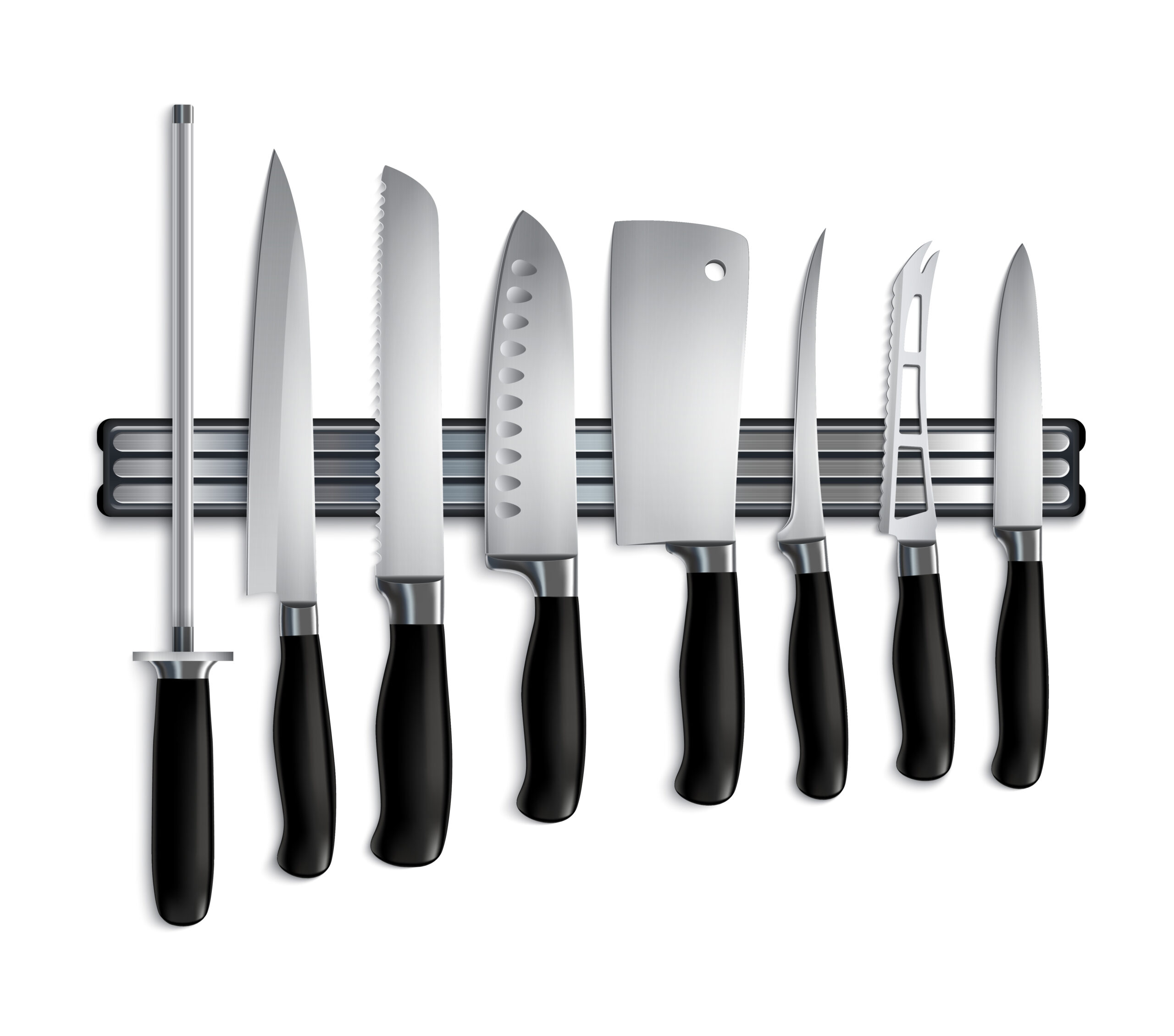
Credit: exquisiteknives.com
Frequently Asked Questions For Types Of Kitchen Knives And Their Uses
What Knives Are Used For What In The Kitchen?
In the kitchen, knives serve different purposes. A chef’s knife is versatile for chopping and slicing. A paring knife is handy for delicate tasks like peeling and coring. A serrated knife is used for cutting bread and tomatoes. A boning knife is for removing bones from meat.
A utility knife is generally used for various small tasks.
What Are The 3 Essential Kitchen Knives?
The essential kitchen knives are the chef’s knife, the paring knife, and the bread knife.
What Are The 3 Most Commonly Used Knives In A Chef’S Kitchen?
The 3 most commonly used knives in a chef’s kitchen are the chef’s knife, the paring knife, and the serrated knife.
What Are 8 Chef Knives Used For?
Chef knives are used for various tasks like chopping, slicing, mincing, and dicing ingredients in the kitchen.
Conclusion
Understanding the various types of kitchen knives and their uses is essential for any avid cook or professional chef. The chef’s knife, with its multipurpose design, is a must-have for most tasks in the kitchen, while the utility knife is perfect for delicate work.
A pairing knife is best suited for intricate tasks such as peeling and deveining, while a bread knife is essential for slicing through crusty loaves without crushing them. For precision cutting, a boning knife helps navigate around bones and joints, and a cleaver is indispensable for larger cuts of meat.
Lastly, the Santoku knife’s versatility makes it a favorite in both Western and Eastern cuisines. By having a variety of kitchen knives and knowing their purposes, you can enhance your cooking skills and enjoy the process of preparing meals even more.
Invest in quality knives, maintain them properly, and experience the joy of effortlessly creating culinary masterpieces.

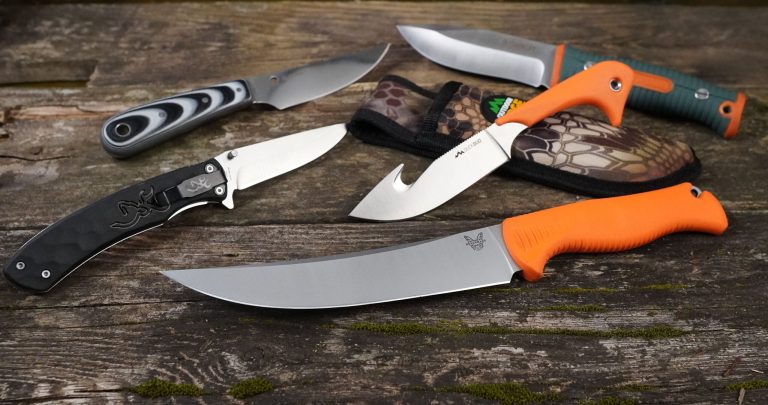
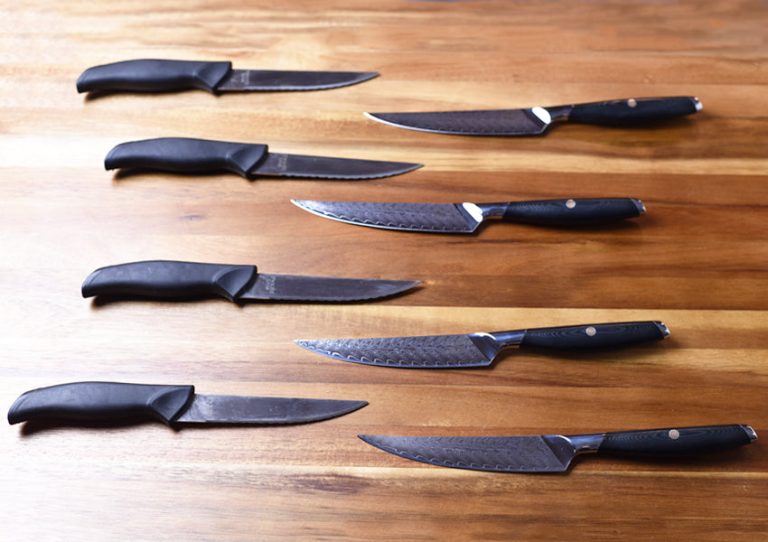
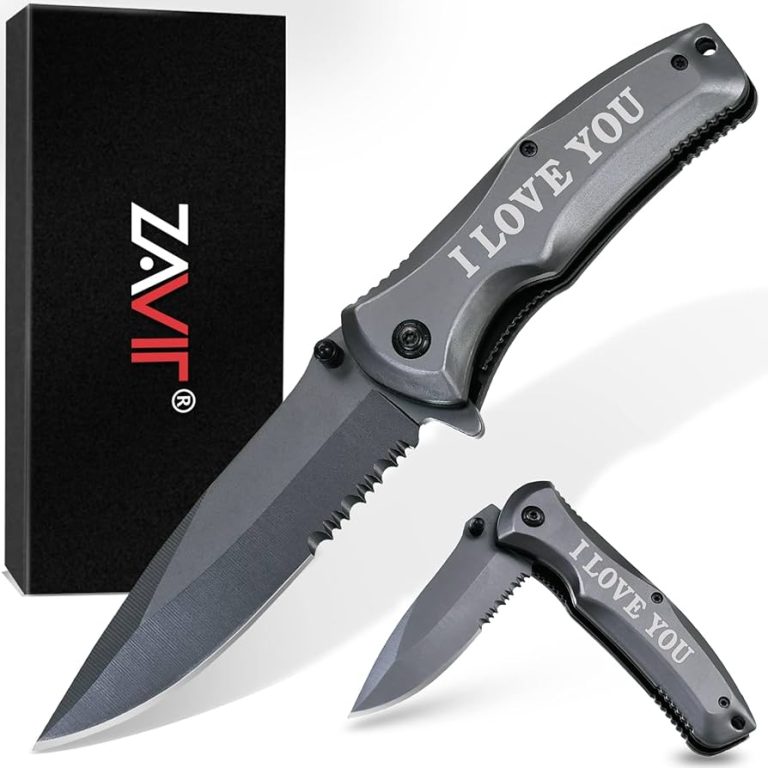
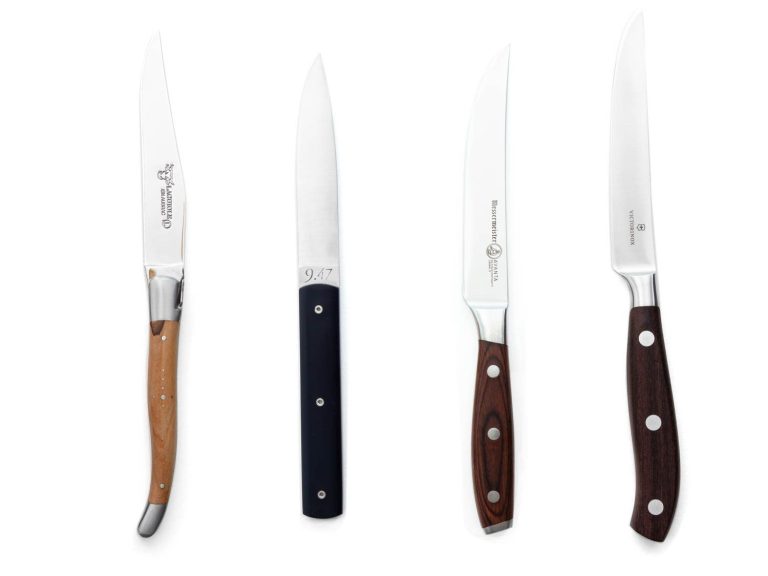
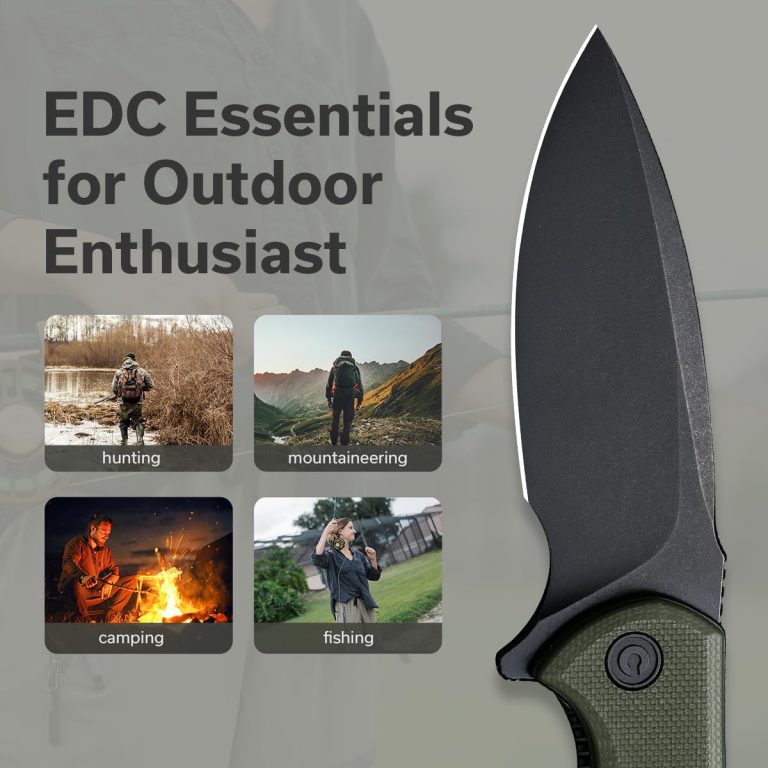
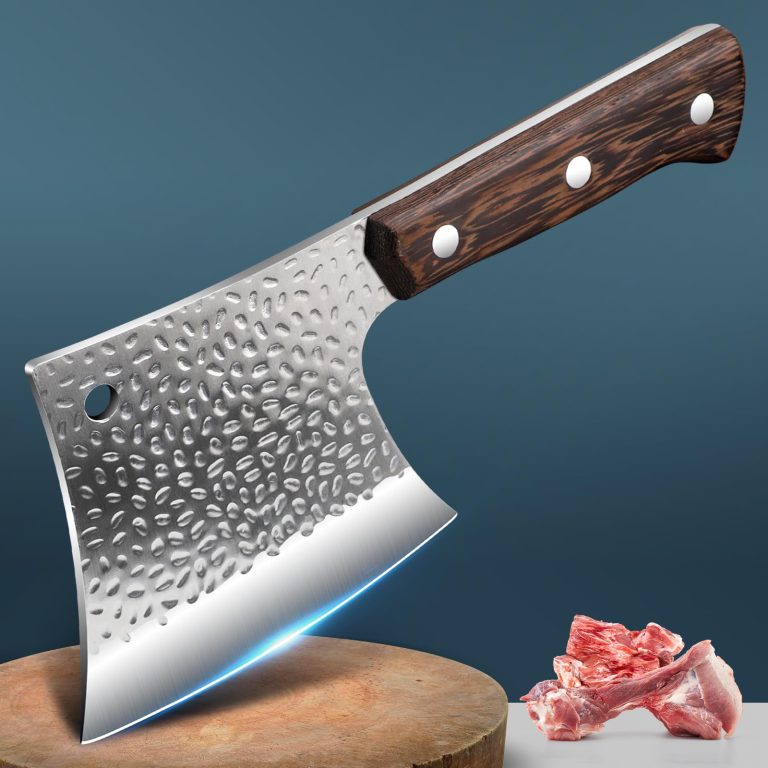
I quite like reading an article that will make men and women think.
Also, thank you for allowing for me to comment!
Good post.I certainly appreciate this website.
Keepp it up!
컬쳐랜드 매입
You made some really good points there. I looked on the web to
find out more about tthe issue and found most people
will goo along with your views on this wweb site.
별풍선 할인
Howcy just wanteed to give you a quick heads up. The words in your
post seem too be running off the screen in Ie.
I’m not sure if his is a folrmatting issue or something to do with wweb
browser compatibility but I thought I’d post to let you know.
The layout look great though! Hope you get the problem
resolved soon. Kudos
상품권 카드결제